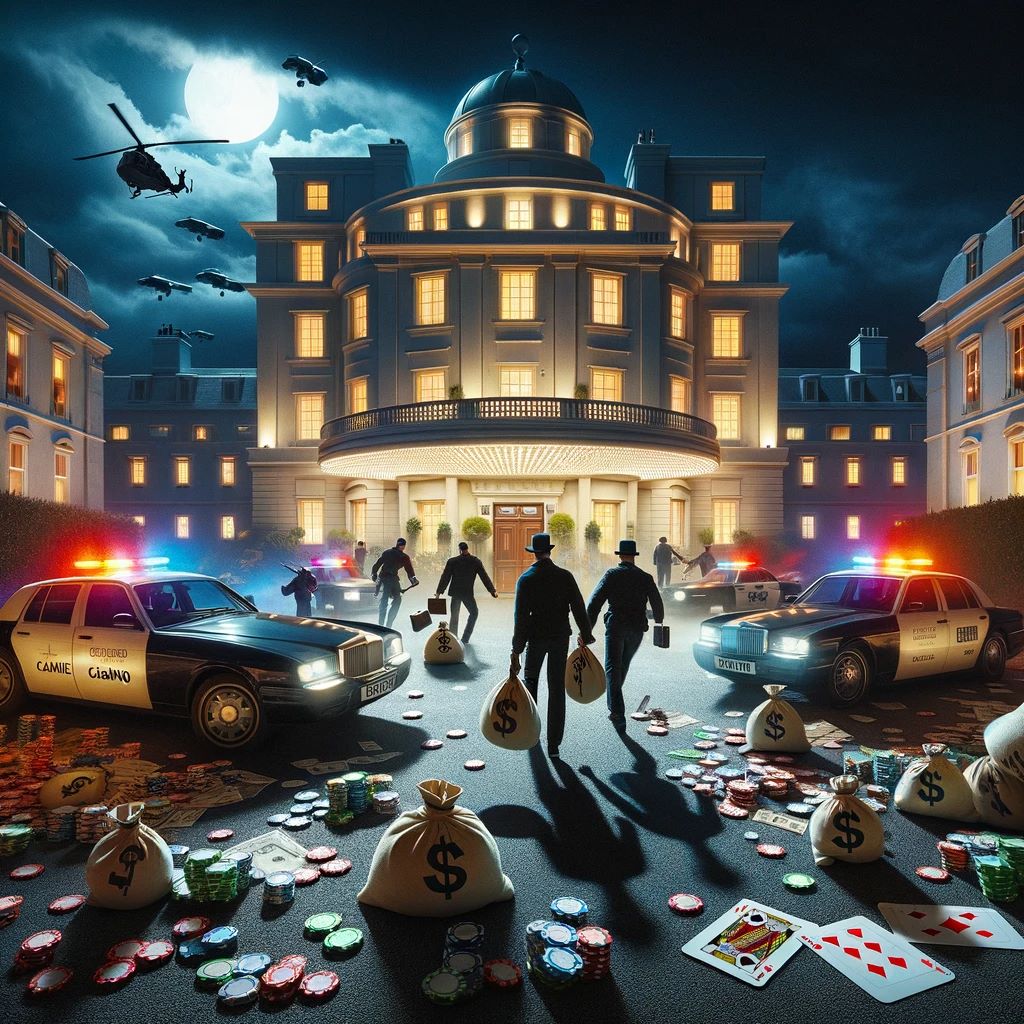The casino. A glittering oasis of fortune and adrenaline, where the clinking of chips and the whirring of slots weave a seductive dance with danger. And what makes this dance even more intoxicating? The daring heist, of course. From Ocean’s Eleven’s smooth swagger to Danny Ocean’s audacious brain heist in Eleven Ocean’s Eleven, cinema has painted a fantastical picture of casino robberies – often far removed from the grittier reality. So, let’s pull back the velvet curtain and compare the thrills of fictional Hollywood capers with the cold, hard facts of real-life casino crime.
The Myth of the Ocean’s Eleven Heist
In this classic, Danny Ocean assembles a dream team of specialists – from acrobats to grifters – to pull off a seemingly impossible multi-casino heist. They employ elaborate tech, dazzling misdirection, and a touch of luck to crack the vaults, leaving casino bosses bewildered and audiences exhilarated. But in reality, such intricate, synchronized attacks are logistical nightmares. Security systems are far more sophisticated today, with multiple layers of physical and electronic barriers. Coordinating a large team without raising suspicion is near-impossible. Additionally, the sheer volume of cash these movies depict simply doesn’t exist in physical vaults anymore. Online casino transactions and cashless systems have significantly reduced the amount of readily available loot.
From Blackjack Tables to Bitcoin Wallets
While movies love the glamour of blackjack and roulette, real-life casino robbers rarely focus on classic games. Instead, they turn to vulnerabilities in technology and financial systems. The 2007 Crown Casino heist in Australia saw hackers exploit a software glitch to manipulate slot machines, netting them tens of millions. Today, cybercrime is even more prevalent, with online casinos facing phishing attacks, malware infiltration, and even cryptocurrency-based scams. The focus has shifted from physical vaults to digital fortresses, demanding a different breed of criminal – the tech-savvy hacker, not the acrobatic acrobat.
The Robin Hood Fallacy
Cinematic heists often cast robbers in a Robin Hood-esque light, challenging corrupt systems and redistributing wealth. Think Danny Ocean returning the money to wronged patrons. However, real-life casino robberies seldom benefit anyone but the perpetrators. They disrupt livelihoods, damage economies, and leave behind a trail of fear and uncertainty. The 2011 Bellagio heist, where armed robbers made off with $1.5 million, may have been thrilling in headlines, but the human cost, including traumatized employees and shaken patrons, is often forgotten.
The Allure of the Heist Endures
Despite the stark contrast between fiction and reality, the casino robbery continues to captivate audiences. Perhaps it’s the inherent fascination with risk and reward, the allure of outsmarting the system, or simply the adrenaline rush of watching a well-coordinated plan unfold on screen. Even as technology and security evolve, filmmakers find new ways to push the boundaries, conjuring up ever-more audacious and technologically savvy heists. The recent “Ocean’s 8” explored the rise of female-led, tech-driven crime, reflecting the changing landscape of both cinema and real-life crime.
In conclusion, while Hollywood paints casino robberies as glamorous, high-stakes adventures, the reality is often far murkier. Cybercrime has replaced acrobatics, and the thrill of the heist comes at a significant human cost. Yet, the allure of the casino caper remains, reminding us that the line between fantasy and reality can be as blurred as a lucky hand at blackjack. So, the next time you spin the roulette wheel or click on an online slot, remember: the real game of chance might not be on the table, but in the shadows, where technology and ambition dance a dangerous tango.

Leave a Reply